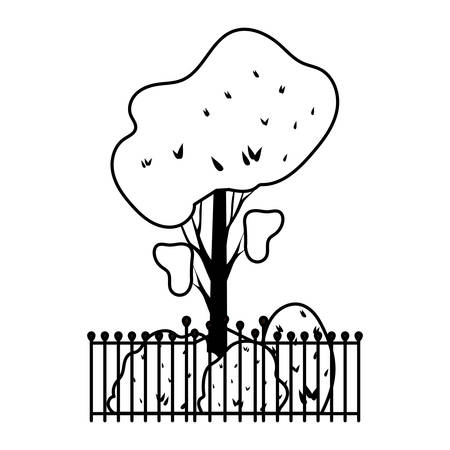Introduction to Spring Bulbs in British Gardens
Spring bulbs have long held a cherished place in the heart of British gardening traditions, acting as harbingers of hope and renewal after the often bleak winter months. Their ability to burst forth with vibrant colour from the cold, damp soil has made them an enduring favourite among gardeners across the United Kingdom. The sight of snowdrops, daffodils, crocuses, and tulips carpeting lawns and borders is not just a visual delight; it is deeply woven into the seasonal rhythms and cultural heritage of Britain. These resilient plants symbolise resilience, continuity, and the quiet anticipation of brighter days ahead. Their popularity has persisted through generations, adapting to changing styles yet always maintaining a core role in both grand landscapes and humble cottage gardens alike. As we explore the history and heritage of spring bulbs in British gardens, it becomes clear that their significance extends far beyond aesthetics—reflecting national identity, horticultural innovation, and communal appreciation for the natural world.
2. Early Cultivation and Historical Origins
The presence of spring bulbs in British gardens is deeply entwined with a rich tapestry of horticultural history. Their introduction and early use can be traced back to significant periods of cultural exchange, trade, and exploration between Britain and continental Europe.
Introduction of Key Spring Bulbs
Snowdrops (Galanthus nivalis), daffodils (Narcissus spp.), and tulips (Tulipa spp.) stand as the most iconic spring bulbs in Britain. Each arrived through different routes and at various times, shaping the heritage of British gardening.
| Spring Bulb | Origin | Introduction to Britain | Historical Context |
|---|---|---|---|
| Snowdrops | Central & Southern Europe | 16th Century | Brought by monks or herbalists; became popular in monastic gardens for their symbolism of purity. |
| Daffodils | Iberian Peninsula & Western Europe | Late Medieval Period | Cultivated for both ornamental and medicinal purposes; associated with hope and rebirth. |
| Tulips | Ottoman Empire (modern-day Turkey) | 16th–17th Century | Became fashionable during the Tudor period; linked to European “tulip mania” and prestige gardens. |
The Journey from Europe to Britain
The transfer of these bulbs was facilitated by expanding trade networks, particularly during the Renaissance and Enlightenment eras. Botanical explorers and plant hunters brought back exotic specimens, while noble estates competed in displaying rare blooms. The appeal of spring bulbs lay not only in their beauty but also in their association with novelty, status, and the burgeoning science of botany.
Cultural Adaptation and Early Uses
Once established in Britain, spring bulbs were cultivated within monastic enclosures, physic gardens, and later in grand landscapes designed by aristocrats. Their resilience to the British climate made them ideal for naturalising in lawns, woodland edges, and formal beds—contributing to what would become quintessential elements of British garden design.

3. Spring Bulbs in British Cultural Heritage
Spring bulbs hold a cherished place within British cultural heritage, transcending their horticultural value to become powerful symbols in folklore, art, and literature. Their annual emergence from the soil has long inspired tales and traditions that mark the transition from winter to spring, acting as beacons of hope and renewal for communities across the country.
The daffodil, perhaps the most iconic of all British spring bulbs, features prominently in local legends and customs, particularly in Wales where it is worn on St David’s Day as a symbol of national pride. Similarly, bluebells are steeped in myth; once thought to ring out to summon fairies or warn of enchantments in ancient woodlands, they continue to captivate the imagination of Britons young and old. These stories have helped embed spring bulbs into the very fabric of British identity, reinforcing their significance beyond the garden.
British artists and writers have frequently drawn upon the beauty and symbolism of spring bulbs to evoke emotion and celebrate the changing seasons. William Wordsworth’s famed poem “I Wandered Lonely as a Cloud” immortalises the golden daffodils along Lake Ullswater, while Victorian painters such as John Everett Millais captured the delicate allure of snowdrops and crocuses in their works. This artistic tradition not only reflects an appreciation for nature’s cycles but also underscores the role of spring bulbs in shaping national aesthetics and seasonal festivities.
Seasonal celebrations often revolve around the first appearance of these blooms. Events such as village daffodil festivals and woodland bluebell walks draw communities together each year, fostering a collective sense of anticipation and joy. In this way, spring bulbs serve as living reminders of continuity, resilience, and shared heritage—qualities deeply woven into British culture.
Through centuries-old stories, creative expression, and communal rituals, spring bulbs have firmly rooted themselves within Britain’s cultural landscape. Their enduring presence ensures that with every new season, they continue to inspire wonder, reinforce local traditions, and unite people in celebration of renewal.
4. Influence of Estate and Public Gardens
The evolution of spring bulb planting in Britain owes much to the grand country estates and later, the rise of public gardens during the 18th and 19th centuries. The aristocratic passion for horticulture, coupled with increased access to exotic plant material through colonial trade, enabled estates to become experimental grounds for new species and innovative planting techniques.
Role of Country Estates in Bulb Cultivation
Large estates such as Kew, Chatsworth, and Sissinghurst not only imported rare bulbs but also invested in landscape design that showcased mass plantings. This was often achieved through collaboration with renowned landscape architects like Capability Brown and Humphry Repton, who integrated swathes of daffodils, crocuses, and tulips into sweeping vistas.
Key Contributions by Estates
| Estate/Garden | Notable Contributions | Lasting Influence |
|---|---|---|
| Kew Gardens | Early experimentation with global bulb varieties; public displays | Became a leading research centre influencing wider horticultural trends |
| Chatsworth House | Pioneering mass bulb drifts across lawns and woodlands | Set standards for naturalistic planting now emulated nationwide |
| Sissinghurst Castle Garden | Creative colour-themed bulb borders and intimate garden rooms | Popularised the use of bulbs in smaller domestic settings |
The Democratization of Bulb Planting: Public Spaces and Parks
The Victorian era marked a turning point as public parks were established to improve urban life. Spring bulbs, thanks to their affordability and dramatic effect, became favoured choices for municipal planting schemes. Cities like London, Liverpool, and Edinburgh led initiatives where tulips, hyacinths, and narcissi were planted en masse along avenues, in squares, and around civic buildings.
Wider Cultural Impact
This movement from private estate exclusivity to widespread public enjoyment fostered a shared seasonal anticipation. It created traditions such as the annual daffodil displays at St James’s Park or the bluebell walks in ancient woodlands. These spectacles remain significant markers of British heritage, linking communities with nature each spring.
5. Horticultural Innovation and Conservation
The evolution of spring bulbs in British gardens has been profoundly shaped by horticultural innovation and a strong tradition of conservation. Over the centuries, advances in plant breeding have enabled gardeners to cultivate an impressive variety of spring bulbs, from richly coloured tulips to the delicately scented narcissus. These innovations often began in Victorian times, when plant hunters and breeders introduced novel hybrids that quickly became staples of the British garden. Today, breeders continue to refine flower forms, enhance disease resistance, and expand the palette of available colours, ensuring that spring displays remain vibrant and diverse.
Alongside these creative advancements, conservation efforts have gained increasing prominence—particularly in response to environmental pressures and habitat loss. Native species such as the English bluebell (Hyacinthoides non-scripta) are now protected under UK law due to their ecological importance and cultural value. Gardeners are encouraged to source bulbs responsibly, prioritising those grown from sustainable stock rather than wild collections, which can threaten natural populations. Restoration projects in historic parks and estates often include replanting native bulbs, helping to maintain the botanical heritage unique to Britain.
The Royal Horticultural Society (RHS) plays a pivotal role in both innovation and conservation. Through initiatives such as plant trials at RHS Gardens Wisley and the provision of expert guidance for home gardeners, the organisation supports the development of new cultivars while championing best practices for bulb care and propagation. The RHS also collaborates with conservation bodies and local authorities to protect rare or endangered species, ensuring that future generations will continue to enjoy the remarkable legacy of spring bulbs in British gardens.
6. Contemporary Significance and Sustainable Practices
In today’s British gardens, spring bulbs retain their cherished status while adapting to contemporary trends and ecological imperatives. Modern gardeners are increasingly mindful of biodiversity and sustainability, blending traditional aesthetics with innovative planting techniques. Bulbs such as daffodils, bluebells, and snowdrops are now often chosen not only for their historical charm but also for their ability to support pollinators and naturalise within existing ecosystems.
Modern Trends in Planting
Recent years have witnessed a resurgence in naturalistic planting schemes, inspired by wildflower meadows and woodland glades. Gardeners now favour drifts of bulbs that mirror nature’s irregular patterns, encouraging self-seeding and perennial growth. This approach is evident in both private gardens and public spaces, where mass plantings of native species create vibrant displays each spring while requiring minimal intervention.
Ecological Considerations
With increased awareness of environmental issues, there is a strong emphasis on selecting bulbs that are well-suited to local soils and climates. Native varieties, such as the English bluebell (Hyacinthoides non-scripta) and wild daffodil (Narcissus pseudonarcissus), are preferred for their resilience and positive impact on wildlife. Many gardeners now avoid peat-based composts and opt for organic fertilisers, further reducing their environmental footprint.
The Role of Community Gardens
Community gardens across the UK play an essential role in preserving the heritage of spring bulbs while fostering social cohesion. Local groups often organise bulb-planting days, bringing together neighbours to enhance shared green spaces with seasonal colour. These initiatives help maintain traditional varieties and ensure that knowledge about sustainable cultivation practices is passed down through generations.
The Ongoing Importance of Spring Bulbs
Despite changing fashions in horticulture, the symbolic value of spring bulbs endures. They remain a key element in garden design, signifying hope, renewal, and continuity with the past. Their adaptability makes them suitable for diverse settings—from stately home grounds to city allotments—ensuring that the legacy of spring bulbs will continue to flourish in British gardens for generations to come.


